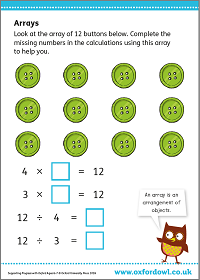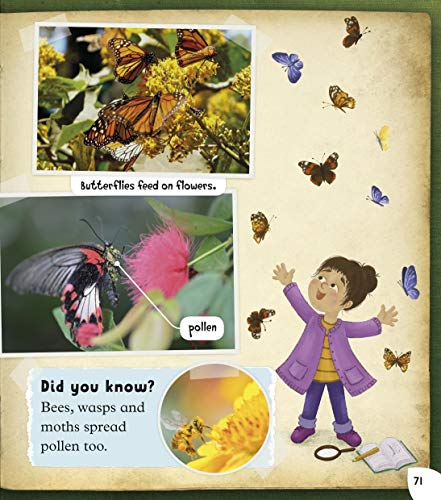Understanding times tables is key to improving maths skills at primary school.
Mastering the times tables (or ‘multiplication tables’) up to 12 can be tricky, but getting to know them inside out is very worthwhile. A good knowledge of times tables will give your child a strong foundation for later maths development, improving their mental maths and boosting their confidence.
Luckily, there are lots of active and fun ways we can support our children. Here are some activities that I have found useful in helping my two primary-aged children learn times tables facts.
1. Ice cube and egg box arrays
An array is a group of shapes or objects arranged in rows and columns. Arrays are great for helping to visualise times tables and can be used for fun activities. You can use objects from around the house like egg boxes, ice cube trays, muffin tins, together with items like buttons or counters to help explore arrays.
For example, an egg box for a dozen eggs can be used to explore these facts:
- 2 × 6 = 12
- 6 × 2 = 12
- 12 ÷ 6 = 2
- 12 ÷ 2 = 6
Try asking questions like, ‘How many 2s are there in 12?’ or ‘How many groups of 6 can we make if we have 12 eggs?’. You could also use arrays by:
- placing small items (such as raisins or pasta shapes) into even-numbered Numicon Shapes
- building arrays on paper with bingo dabbers
- finger painting or using corks dipped in paint.
Activity: Arrays

Complete the missing numbers in the calculations using this array to help you.
2. Coin counting
Sanitise some 1p, 2p, 5p, and 10p coins (no more than 12 of each) and ask your child to separate them into piles.
Take it in turns to pick up a small number of the same coin. Estimate how much money you think you have and then count in groups to find the answer. How close were you?
3. Playing card products
A bit of healthy competition between siblings or friends can be a great motivator for learning some of the trickier times tables! This game is most suitable for children aged 7–11, but can be adapted for younger children.
- Take a pack of cards and remove the Kings and Jokers. In this game, Aces = 1, Jacks = 11, and Queens = 12.
- Deal 6 cards to each player.
- Each player places 1 card down at the same time, and then both players must multiply the cards together.
- The winner of the hand is the player who says the correct product first (the ‘product’ is the name we give to the result when two numbers are multiplied together). The winner picks up the played cards.
- When a player runs out of cards, they pick up 2 more from the spare pile.
- The winner is the one with the most cards when the spare pile is empty.
If you want to adapt the game for children aged 5–7, take one of the 2s, 5s, or 10s and place it face up in the middle of the table. This is the times table you are practising.
Each player should work out the product of the card they put down and the card in the middle of the table, with the winner of each hand the player who gets their answer first.
4. Recipe scaling
To show older children how times tables help in a real-life context, look at recipes and scale up or down the quantities for more or fewer people. For example:
A recipe makes 4 portions. Ask your child to work out what quantities would be needed for 2 people, or 8 people, or 20 people. They will need to multiply each quantity in the recipe by the same amount.
5. Multiplication bingo
Each player makes a 3 × 3 grid by drawing squares on a piece of paper. Within each of the 9 squares, each player writes answers from whichever times table you are focusing on in a random order. For example, if looking at the 8 times tables, each player would choose 9 answers from: 8, 16, 24, 32, 40, 48, 56, 64, 72, 80, 88, 96.
The caller thinks of a random calculation from the times table – for example, 7 × 8. If the answer is on the player’s card, they cross it out. The winner is the first person to cross out all their answers and shout ‘Bingo!’
There are lots of other games to explore which help with the learning of times tables, so remember to always keep an eye out for new ideas. Opportunities to practise maths skills are everywhere!
Video playlist: Times tables tips and tricks
Learning times tables can be fun! Find out about the patterns in times tables and get ideas for practising times tables at home.
More from Oxford Owl
- Web page: Help with times tables
- Web page: The Year 4 multiplication tables check
- Blog: Times tables tips
- PDF: Times tables chart
- PDF: Maths in School Booklet: Times tables

